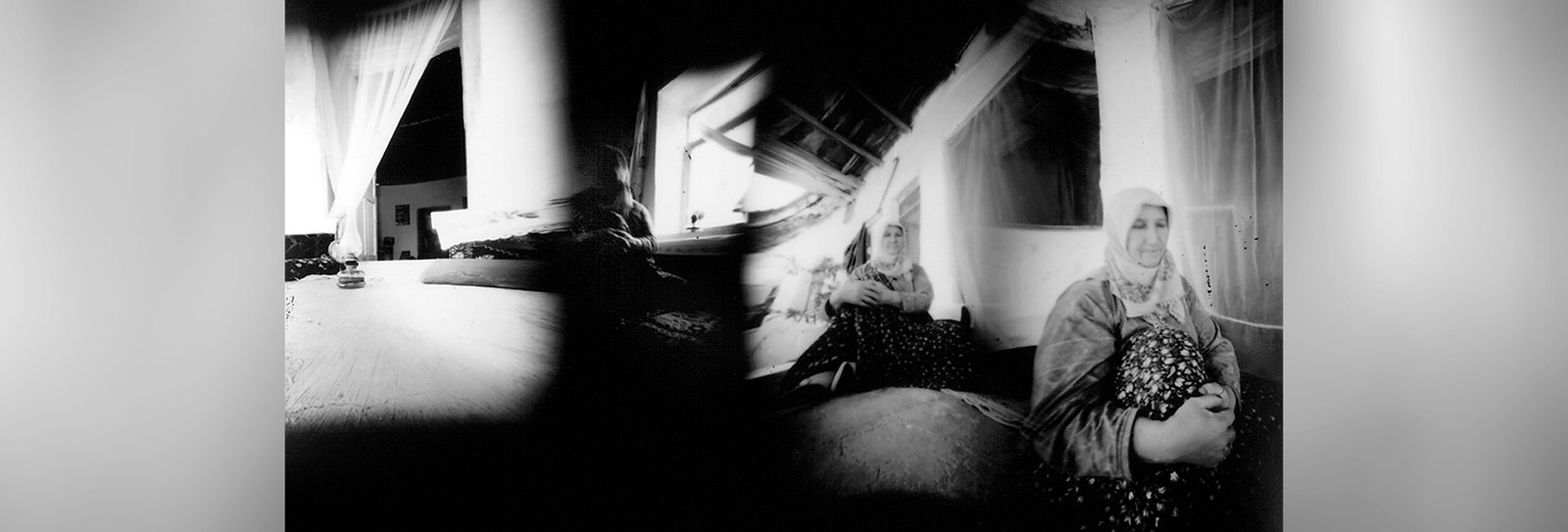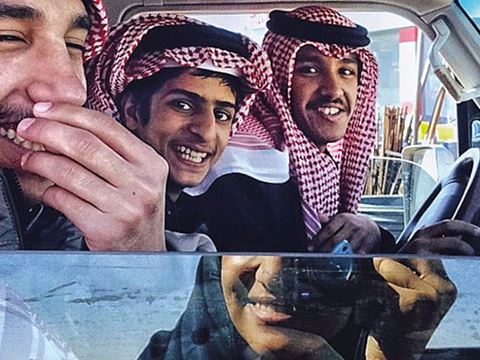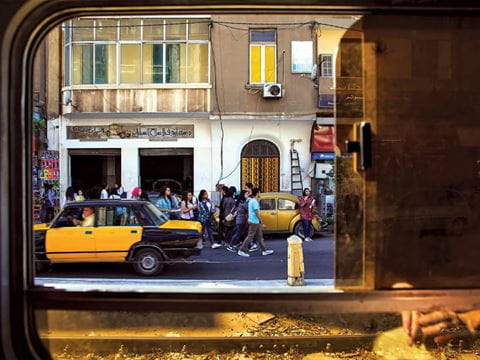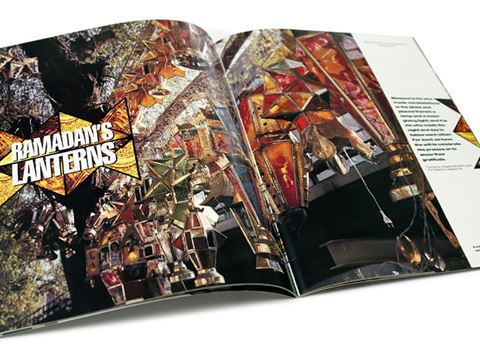
FirstLook: Inside/Outside
This "dreamlike" photograph was made both inside and outside of my grandmother’s sister-in-law’s adobe house near Ankara, Turkey using a pinhole camera that I made by hand from a paint can.
This photograph was both inside and outside of my grandmother’s sister-in-law’s adobe house near Ankara, Turkey. I was seeking scenes of people in liminal spaces such as windows and doors; in addition, a curtain—which both reveals and conceals—can be a metaphor for the difference between a perspective from the inside or from the outside of any situation.
The image used a pinhole camera that I made by hand from a paint can. Along its curve I made four holes and covered each one with electrical tape that worked like a shutter. Each hole exposed a

Pinhole camera paint can used to make the above image.
—Tuba Koymen
You may also be interested in...

Saudi Camel Festival by Norah AlAmri
Arts
This photo series began unexpectedly when I found that photographing people behind windows and maintaining a distance made me, and the people I photographed, feel more comfortable. I purposefully frame myself in the reflection of the window to see into the space I’m photographing. I feel every window tells a different story.
How to Discover Egypt From the Inside Out
Arts
Rather than just telling travelers where to go, the guidebook Egypt: Inside Out by Trevor Naylor offers an inside-out perspective that evokes the experience of being there, inviting readers to embrace an almost meditative travel discipline of slowing down to take in the details and complexities of Egypt, moment by moment.
Find Ramadan Lanterns on Cairo's Streets with John Feeney
Arts
In the March/April 1992 issue, writer and photographer John Feeney took AramcoWorld readers on a walk through the streets of Cairo during Ramadan.